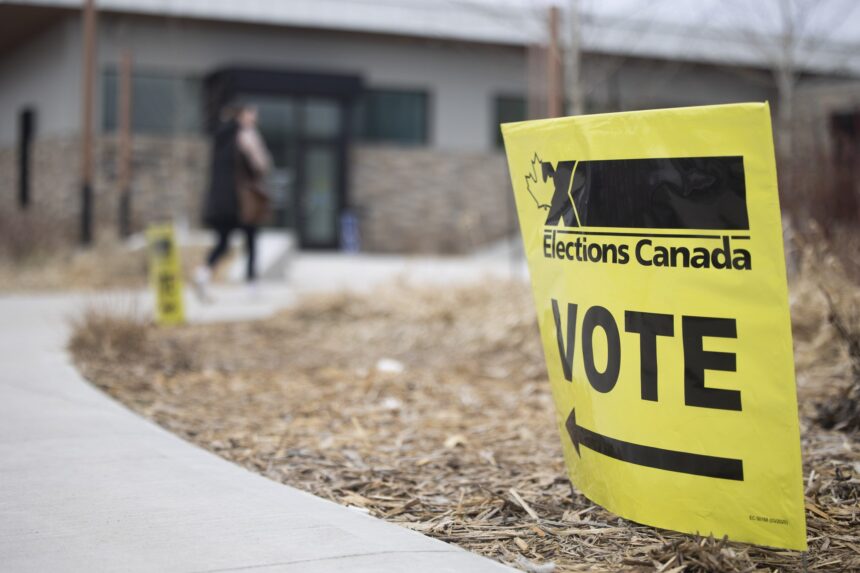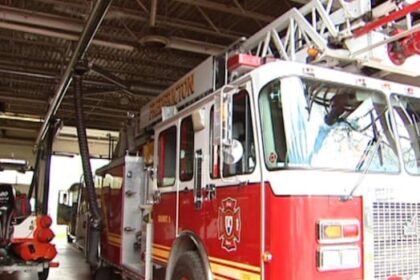Published Apr 24, 2025 • 3 minute readA recent survey by Narrative Research showed that 66 per cent of 1,100 voters in Atlantic Canada voted or planned to vote for the Liberal Party in the federal election on Monday. Photo by PostmediaA red wave is building in Atlantic Canada.A Narrative Research poll released Tuesday shows the Liberal Party with the support of two out of three decided voters in the region.The poll of more than 1,100 decided voters show Mark Carney’s Liberals at 66 per cent, a full 40 points ahead of the Conservatives, under Pierre Poilievre, at 26 per cent. The NDP (Jagmeet Singh) was at six per cent.THIS CONTENT IS RESERVED FOR SUBSCRIBERS ONLY.Subscribe now to access this story and more:Unlimited access to the website and appExclusive access to premium content, newsletters and podcastsFull access to the e-Edition app, an electronic replica of the print edition that you can share, download and comment onEnjoy insights and behind-the-scenes analysis from our award-winning journalistsSupport local journalists and the next generation of journalistsSUBSCRIBE TO UNLOCK MORE ARTICLES.Subscribe or sign in to your account to continue your reading experience.Unlimited access to the website and appExclusive access to premium content, newsletters and podcastsFull access to the e-Edition app, an electronic replica of the print edition that you can share, download and comment onEnjoy insights and behind-the-scenes analysis from our award-winning journalistsSupport local journalists and the next generation of journalistsRegister to unlock more articles.Create an account or sign in to continue your reading experience.Access additional stories every monthShare your thoughts and join the conversation in our commenting communityGet email updates from your favourite authorsSign In or Create an AccountorArticle contentThe survey showed few people voted or plan to vote for the Green Party (Elizabeth May and Jonathan Pedneault) or the People’s Party of Canada (Maxime Bernier). The online survey of 1,325 Atlantic Canadian eligible voters was conducted on April 21-22.“If those numbers are even close to what reality is, that’s a huge gain for the Liberals from where they were a year ago in that area,” said Lori Turnbull, a professor in the faculty of management at Dalhousie University in Halifax.“If that’s anywhere close to where the popular support is, then they are in the neighbourhood of another red wave. It’s 2015 all over again.”In the 2015 federal election, the Liberals swept all 11 seats in Nova Scotia and took 33 in the Atlantic region. The Liberals captured 24 seats, including eight in Nova Scotia, in the Atlantic region in the 2021 electionPoll aggregator 338Canada is at this point calling for Atlantic numbers more in line with 2021, with 25 Liberals and seven Conservatives, including three in Nova Scotia, if the vote were held today.Article contentTurnbull said while the polling favours the Liberals, there are a few seats to watch closely.“In some ridings, the Liberals may get way more votes than they need and may not actually win a couple of ridings,” Turnbull said. “The Halifax riding will be interesting to watch and Chris d’Entremont’s (Acadie-Annapolis) riding too, with the Liberal candidate very popular. I wouldn’t be surprised even though they are in a terrible spot in the polling, if the NDP captures Halifax with Lisa Roberts’ candidacy.”Roberts is running in the riding of Halifax against Shannon Miedema (Liberal), Mark Boudreau (Conservative), Amethyste Hamel-Gregory (Green) and Maricar Aliasut (PPC).D’Entremont, the Conservative incumbent for Acadie-Annapolis, is up against Ronnie LeBlanc (Liberal), Matthew Piggott (Green), Ingrid Deon (NDP) and James Strange (PPC).Shift in political landscapeTurnbull said it was incredible to see how the political landscape has shifted over the last few months.Article contentThe Liberals seemingly gained a boost when Mark Carney was elected Liberal leader on March 9 to take over from Justin Trudeau, who had been prime minister since 2015.Then came annexation and tariff threats from U.S. President Donald Trump.“That’s a huge gain for the Liberals (in Atlantic Canada) from where they were a year ago in that area,” said Turnbull. “There was disgruntlement with Trudeau, the carbon tax and people were really looking for a change. Now I think it looks like Carney’s stock is very high in this area and Atlantic Canada is often a stronghold for the Liberals and it looks like it’s going back to that.”Heading into the election, the Liberals were at 152 seats, the Conservatives 120, the Bloc 33, the NDP 24 and the Green two. There are three independents and four vacant seats.Advance pollsTurnbull said she wasn’t surprised by the record turnout in the advance polls from April 18-21 which saw 7.3 million votes cast nationally. In Nova Scotia, over 210,000 people voted, an increase of 50,000 from advance polling during the 2021 federal campaign.“There’s a lot of excitement around this election,” Turnbull said. “People know that their vote counts and the results are going to be very consequential. It really matters who is going to be prime minister.“It’s good news for the bigger parties, not so good for the smaller parties.”Article content
Survey shows potential red wave building for Liberals in Atlantic Canada










